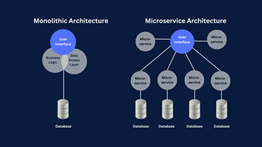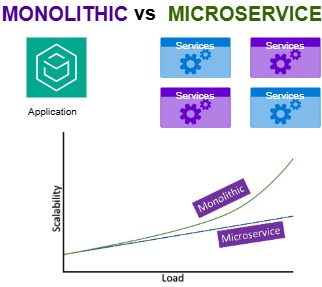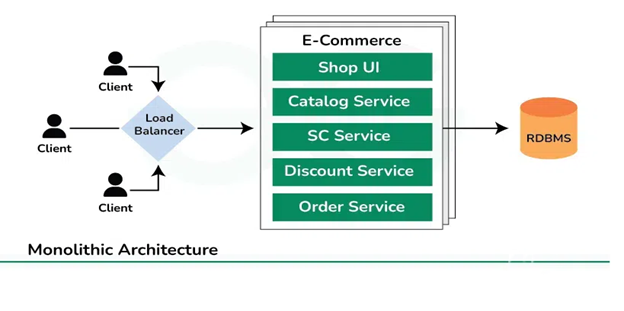
Monolithic vs Microservices Architecture: Which One to Choose?
In today’s rapidly evolving tech landscape, choosing the right software architecture is more important than ever. Whether you’re building a brand-new application or modernizing an existing one, the decision between monolithic and microservices architectures can significantly shape your project’s trajectory. This choice doesn’t just affect how your code is structured—it impacts everything from development speed and scalability to team collaboration, deployment workflows, and operational costs.
Both architectural styles come with their own strengths and trade-offs, and the best fit largely depends on your team size, technical goals, business needs, and long-term vision. Understanding these approaches clearly can help you make an informed, strategic decision early in your software journey.

What is Software Architecture?
Before diving into specific architectures, let’s clarify what software architecture actually means. Software architecture defines how components of a software system are organized, how they interact with each other, and what constraints govern their design and evolution. Think of it as the blueprint that guides how your application is built and maintained over time.
What is Monolithic Architecture?
A monolithic architecture is the traditional way of building software, where all the application’s components—UI, business logic, and data access—are bundled into a single, unified codebase. It’s a self-contained system where everything runs together as one unit.
Think of it like a classic restaurant where everything—from cooking to serving to billing—happens under one roof. The waiter takes your order, the kitchen prepares it, and everything moves in a single streamlined workflow. While this setup is efficient in many ways, if one part (like the kitchen) hits a snag, the entire operation can be affected.

Key Characteristics:
● Single codebase: All features and logic live in one place.
● Unified deployment: The entire app is deployed as a single unit.
● Tight coupling: Changes in one part often affect others.
● Shared database: Typically uses a centralized relational database.
Pros of Monolithic Architecture
● Simplicity: Easier to build, test, and deploy—especially for startups and smaller teams.
● Performance: No inter-service communication overhead; everything is handled internally.
● Centralized Management: Easier logging, monitoring, and debugging.
● Faster Initial Development: Ideal for MVPs or small to mid-sized applications.
● Less Operational Overhead: One server, one deploy process, fewer moving parts.
Cons of Monolithic Architecture
● Scalability Challenges: You have to scale the whole application, even if only one part needs more resources.
● Difficult Maintenance: As the codebase grows, it can become bloated and hard to manage.
● Deployment Risks: A change in one feature means deploying the entire system—introducing potential instability.
● Slower Innovation: Integrating new technologies may require major refactoring.
● Testing Complexity Over Time: Unit tests are easier, but full end-to-end testing gets harder as the app grows.
What is Microservices Architecture?
A microservices architecture breaks an application down into a collection of small, independent services, each responsible for a specific business function. Instead of one big codebase like in monolithic architecture, every microservice has its own codebase, database, and deployment pipeline—and they all communicate with each other via APIs.
If that sounds abstract, think of a modern food delivery app like Uber Eats. Restaurants prepare meals, drivers handle deliveries, and payment systems process transactions. Each part works independently but contributes to a single, seamless experience for the user. That’s microservices in action—autonomous units collaborating through clear interfaces.

Key Characteristics of Microservices:
● Small, single-purpose services: Each one tackles a specific feature or domain.
● Independent codebases & databases: No shared resources unless explicitly integrated.
● API-based communication: REST, gRPC, or messaging systems connect services.
● Technology agnostic: Different services can use different programming languages or frameworks.
● Separate deployment pipelines: Each service can be built, tested, and deployed on its own schedule.
Pros of Microservices Architecture
● Scalability: You can scale only the services under load—making resource use more efficient.
● Independent Deployment: Teams can release updates without coordinating with the entire company.
● Fault Isolation: If one service crashes, it doesn’t necessarily bring down the entire app.
● Technology Flexibility: Use the best tools or languages for each service’s specific need.
● Team Autonomy: Enables smaller, focused teams to own and manage specific services.
Cons of Microservices Architecture
● Increased Complexity: Managing dozens (or hundreds) of services is inherently more complex than one app.
● Infrastructure Overhead: Requires robust DevOps practices, CI/CD pipelines, and orchestration tools like Docker and Kubernetes.
● Data Management Challenges: Ensuring consistency and coordination across services can be tricky.
● Latency & Network Failures: Inter-service communication introduces network overhead and potential failure points.
● Monitoring & Debugging: Tracing issues across distributed systems requires advanced observability tools.
Real-World Examples
Netflix: The Poster Child for Microservices Success
Netflix’s journey from monolith to microservices represents one of the most cited success stories in the industry. Initially, Netflix operated as a traditional monolithic application. However, as they transitioned from DVD rentals to streaming, they faced significant scalability challenges.
In the microservices-based architecture that Netflix deployed, larger software programs were broken down into smaller, independent programs that could be developed, deployed, and scaled separately. This transformation allowed Netflix to handle millions of concurrent streams globally while maintaining high availability and rapidly innovating on new features.
Key benefits Netflix realized:
● Ability to scale specific components based on demand
● Faster feature deployment
● Better fault isolation
● Support for a wide range of devices and platforms
Spotify: Orchestrating a Symphony of Services
Spotify’s architecture exemplifies how microservices can support massive scale while delivering personalized experiences. Their system is designed around:
● Scalability: Services scale independently based on demand
● Reliability: Fault isolation prevents cascading failures
● Low-latency content delivery: Distributed services and CDNs ensure quick response times
● Personalized experiences: Independent recommendation engines and user management services
Amazon: From Retail Monolith to Service Empire
Amazon’s transition from monolith to microservices represents perhaps the most extensive transformation in tech history. In the early 2000s, Amazon realized its growing monolithic architecture couldn’t support its expanding business needs. The company gradually decomposed its application into hundreds of microservices.
This transformation enabled Amazon to:
● Launch AWS as a separate business line
● Support diverse retail operations globally.
● Implement rapid experimentation and deployment
● Scale different parts of the business independently
How to Choose: Monolithic vs Microservices
Here’s the truth: there’s no one-size-fits-all answer when it comes to choosing between monolithic and microservices architectures. The “right” decision depends heavily on your project’s scope, your team, and where you see the application going in the future.
To make that decision a little easier, here’s a practical breakdown of key factors to consider:
Team Size and Structure
● Small Teams (1–5 developers): A monolithic architecture is often more manageable. It’s easier to coordinate, test, and deploy when everything’s in one place.
● Larger Teams (10+ developers): Microservices allow teams to work more independently, each owning specific services without stepping on each other’s toes.
Application Complexity
● Simple Applications: If your app has a narrow scope and limited features, a monolith can speed up development and reduce overhead.
● Feature-Rich or Complex Systems: Microservices shine when your application has multiple modules or requires clear separation of responsibilities.
Growth Trajectory
● Stable, Predictable Growth: A monolithic setup may be just fine—less moving parts, less cost, and easier to maintain.
● Rapid or Uncertain Scaling: If your app might explode in usage or expand quickly, microservices offer the flexibility to scale only the parts that need it.
Technical Maturity
● Limited DevOps Skills or Tooling: Go with a monolith to avoid premature complexity.
● Well-Established DevOps Culture: If you already have CI/CD, containerization, and monitoring tools in place, microservices can help you go further.

